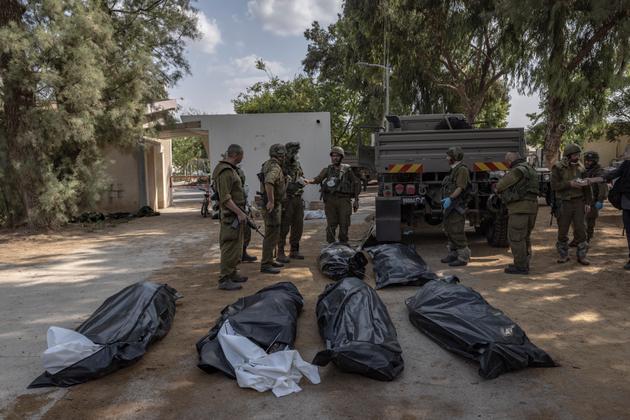

Israel-Hamas: How Le Monde navigates the image war
In DepthThis conflict, even more than others in the past, raises the question of where photos come from and how they are used. Whether for the newspaper's print or digital editions, Le Monde's editorial team is constantly faced with crucial choices.
Since Hamas attacked Israel on October 7, Le Monde's photo department has been receiving a daily flood of images from Gaza and Israel. It's a terrible torrent, carrying with it, as if in waves, visions of buildings collapsed under bombs, of the wounded being carried out on men's backs, of children's silhouettes in shrouds, of hostages' parents, of young rave party victims... The journalists have been forced to plunge into this incessant flow. First, they have to look at everything, then check the origin of the shot, and finally select the images most likely to tell the true story of this conflict, which is so sensitive for readers.
Le Monde has covered many wars since the end of the 20th century, when it gave photography a real place, both in its print version and on its website. Yet this war is more difficult to recount, since every word and every image has the potential to shock, fuel controversy and arouse suspicion among readers. "This war is also a war of images," notes editorial director Caroline Monnot. "Many of the photos we receive are horrific. The greatest difficulty is to document the event, to bear witness to the horror without euphemizing it, but also to avoid as much as possible being instrumentalized and having what we publish become a propaganda tool."
On October 7, the photo department set about finding photographers willing to work exclusively for Le Monde on an ongoing basis. This task was relatively easy in Israel, where we used to working with seasoned photographers who know the region inside out. On October 10, Irish photographer Andrew McConnell accompanied reporter Samuel Forey and captured images of the Israeli army collecting the bodies of victims from the Kfar Aza kibbutz and placing them in large plastic bags. These photos soon appeared on the front page of the print edition and of the website.

Find a photographer you can trust
In Gaza, it is a different story than other recent wars. No photographer is allowed into the territory, which has been sealed off by the Israeli army. Make no mistake: Images still abound. Much more so than in the war in Ukraine, for example, where photographic coverage remains unambiguous: Moscow prevents photojournalists from covering the Russian front, with only its own images filtering through its state agencies. Much more so than in Syria, where President Bashar Al-Assad had long hunted journalists, in order to conceal both his ferocious crackdown on Syrian rebels in 2013 and his use of chemical weapons.
You have 75% of this article left to read. The rest is for subscribers only.
